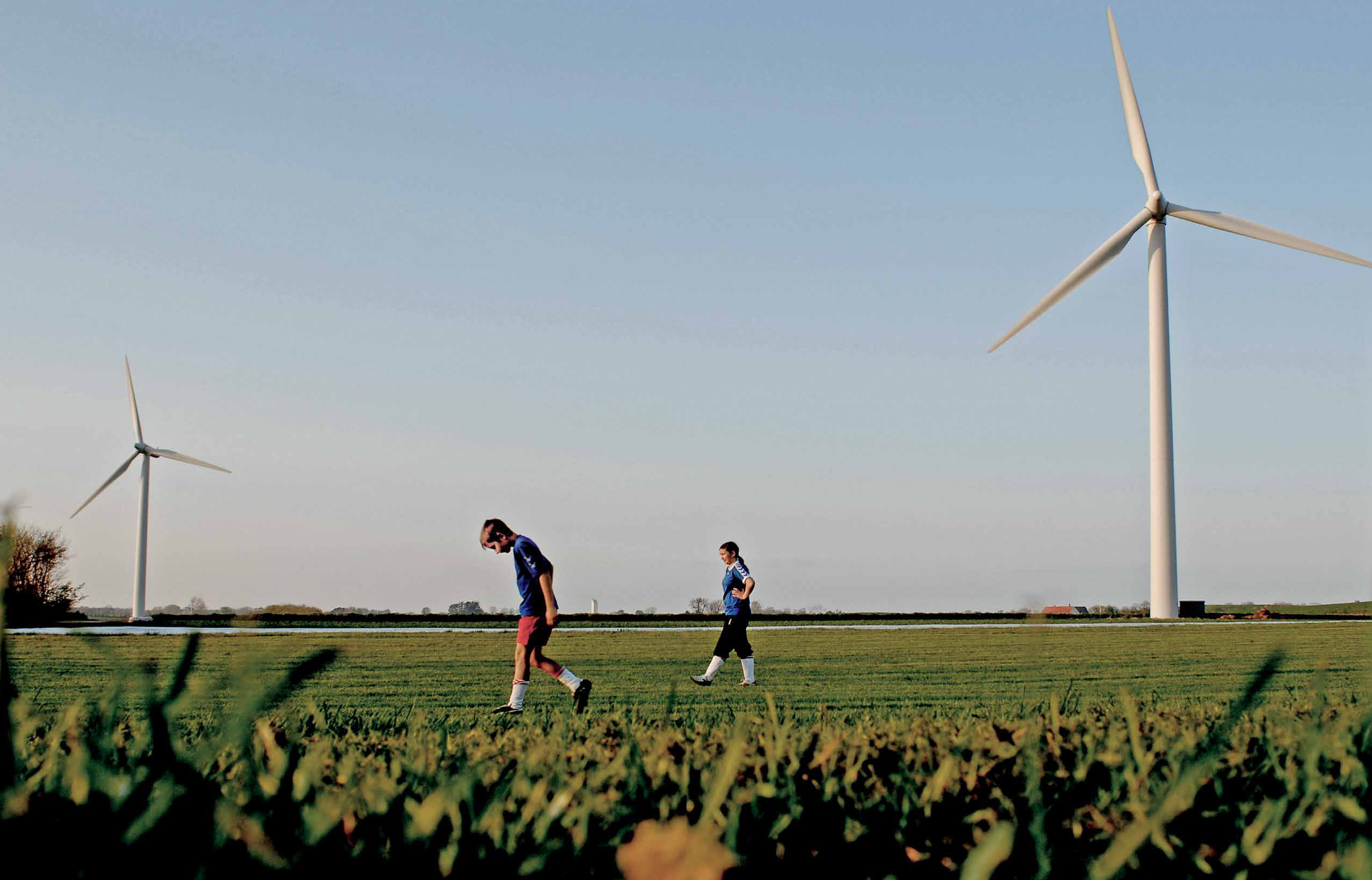| CHAPTER 24 | SUN, WIND, AND WATER ENERGY |
FUELED BY THE SUN
24.1 A tiny island makes big strides with renewable energy
434

435
CORE MESSAGE
In order to become a sustainable society, we need to transition to reliable, renewable energy sources with acceptable environmental and social impacts. No single energy source can replace fossil fuels. Instead, a variety of methods, selected to meet the needs of the population, and availability of local energy sources, will help communities shift to sustainable energy use. Fortunately, we have many good options already at our disposal, with other new methods currently in research and development.
GUIDING QUESTIONS
After reading this chapter, you should be able to answer the following questions:
 What are the characteristics of a sustainable energy source and what role does renewable energy play in terms of global energy production?
What are the characteristics of a sustainable energy source and what role does renewable energy play in terms of global energy production? How do wind and solar power technologies capture energy? What are the advantages and disadvantages of wind and solar power and how does each compare to fossil fuels in terms of true costs?
How do wind and solar power technologies capture energy? What are the advantages and disadvantages of wind and solar power and how does each compare to fossil fuels in terms of true costs? In what ways can we harness geothermal energy and the power of water and what are some of the trade-offs associated with each resource?
In what ways can we harness geothermal energy and the power of water and what are some of the trade-offs associated with each resource? What combination of actions did Samsø take to become an energy-positive island and what is the take-home message to other communities who might want to reduce their use of fossil fuels?
What combination of actions did Samsø take to become an energy-positive island and what is the take-home message to other communities who might want to reduce their use of fossil fuels? What roles do conservation and energy efficiency play in helping us meet our energy needs sustainably?
What roles do conservation and energy efficiency play in helping us meet our energy needs sustainably?
436
On a typical cold, misty January day in Denmark in 2003, many of the 4100 residents of a small island gathered together at the beach. Everyone, including the mayor, strained their eyes to see the faint outline of several structures, each over 30 storeys tall, located more than 3 kilometres offshore.
Nestled in the crook of Denmark’s mainland, Samsø is home to a small, windswept community of Danish farmers known for their sweet strawberries and tender early potatoes. It is a quiet and serene place. Yet it has been the site of a dramatic revolution—a community transformation that made headlines around the world.
The transformation began on that cold day in 2003. Finally, the mayor pushed a button, and the offshore structures slowly creaked to life. Through the grey mist and rain, people could gradually see the massive blades begin to rotate, converting the power of wind into energy. It was a landmark day in the island of Samsø’s ambitious attempt to become the greenest, cleanest, and most energy-independent place on Earth.
“That was a very big moment,” recalls Søren Hermansen, a Samsø resident who was key in getting the community behind the project. “Nobody really thought it would happen when we started.”
WHERE IS SAMSø?
